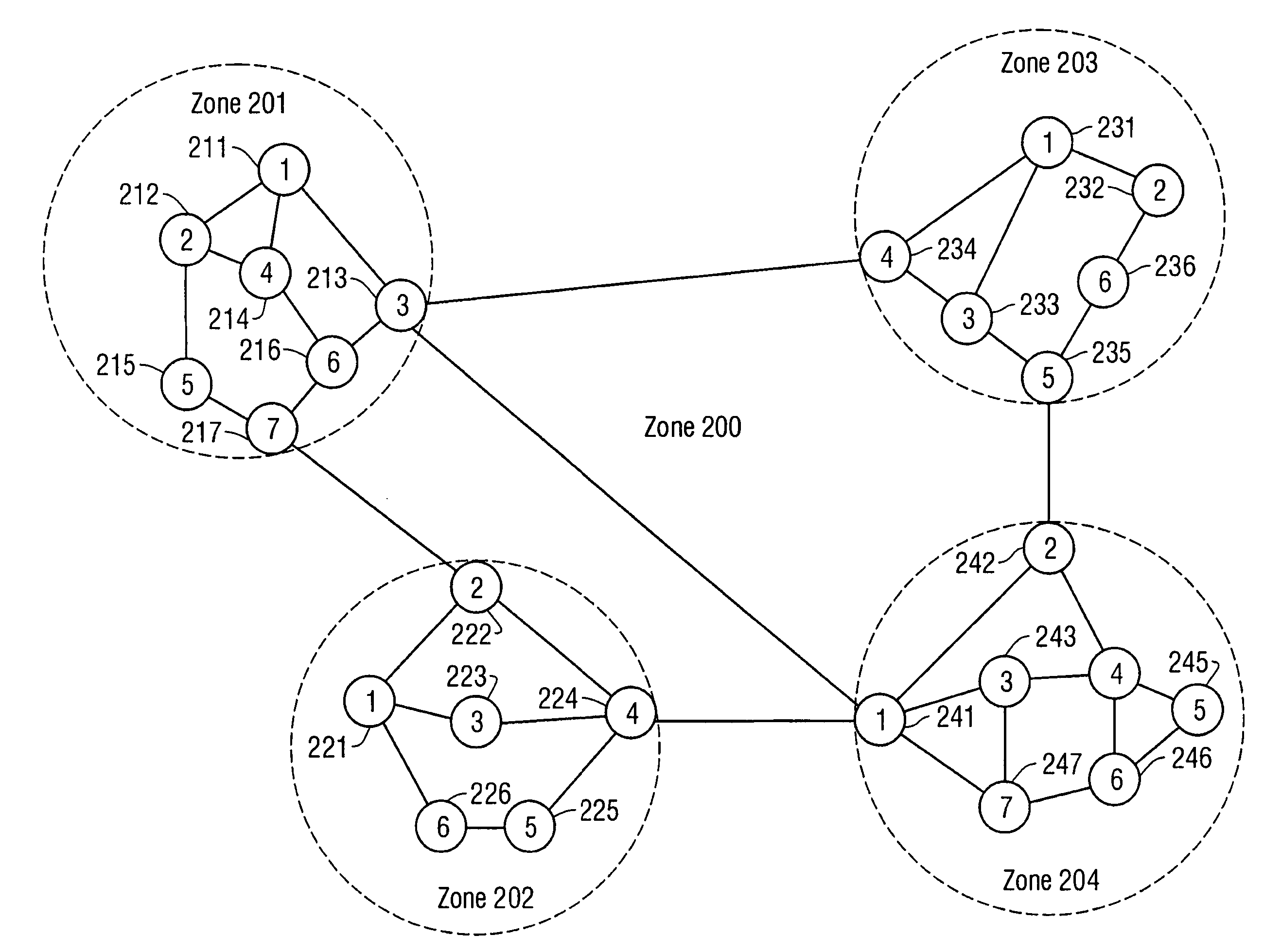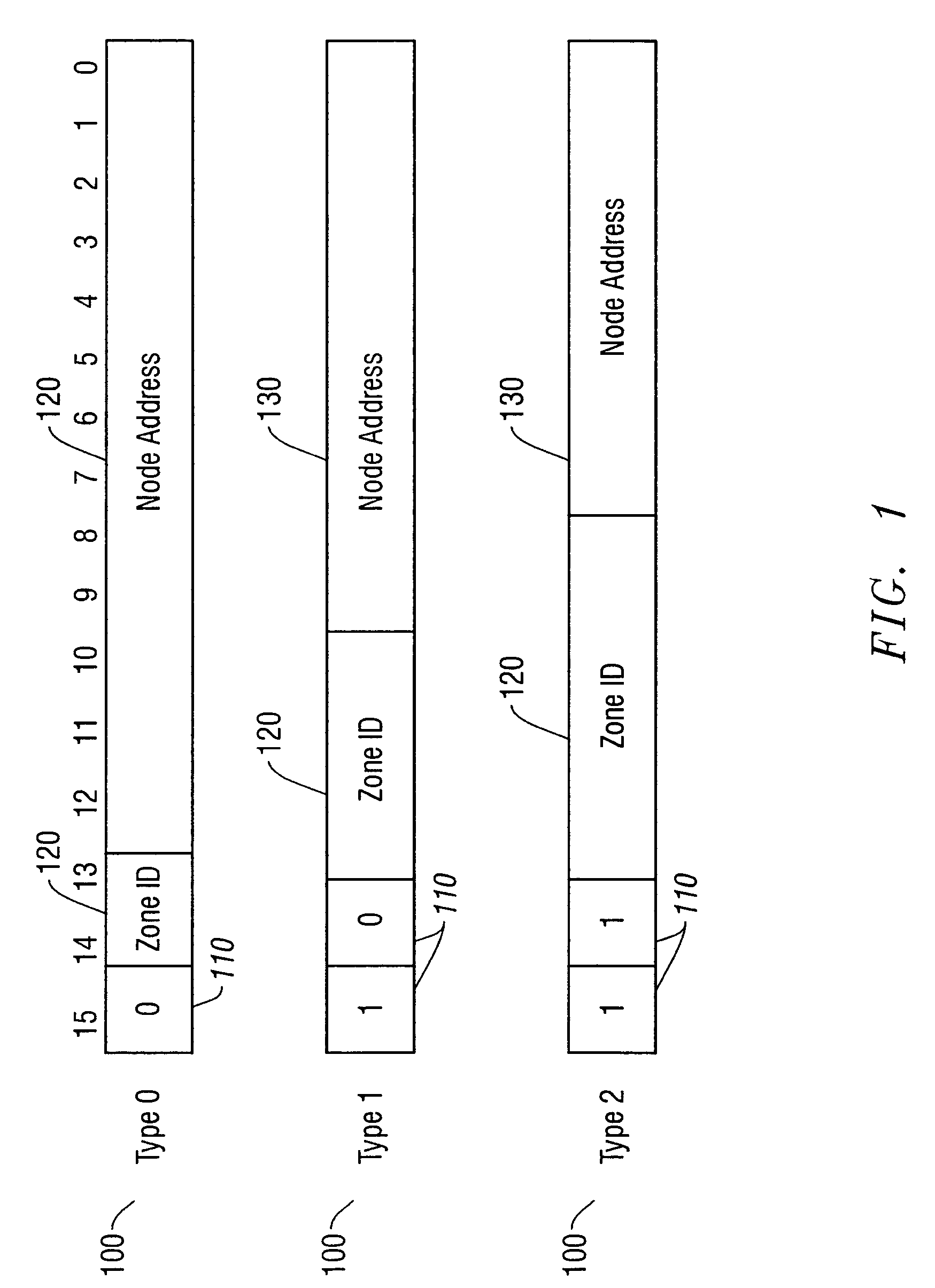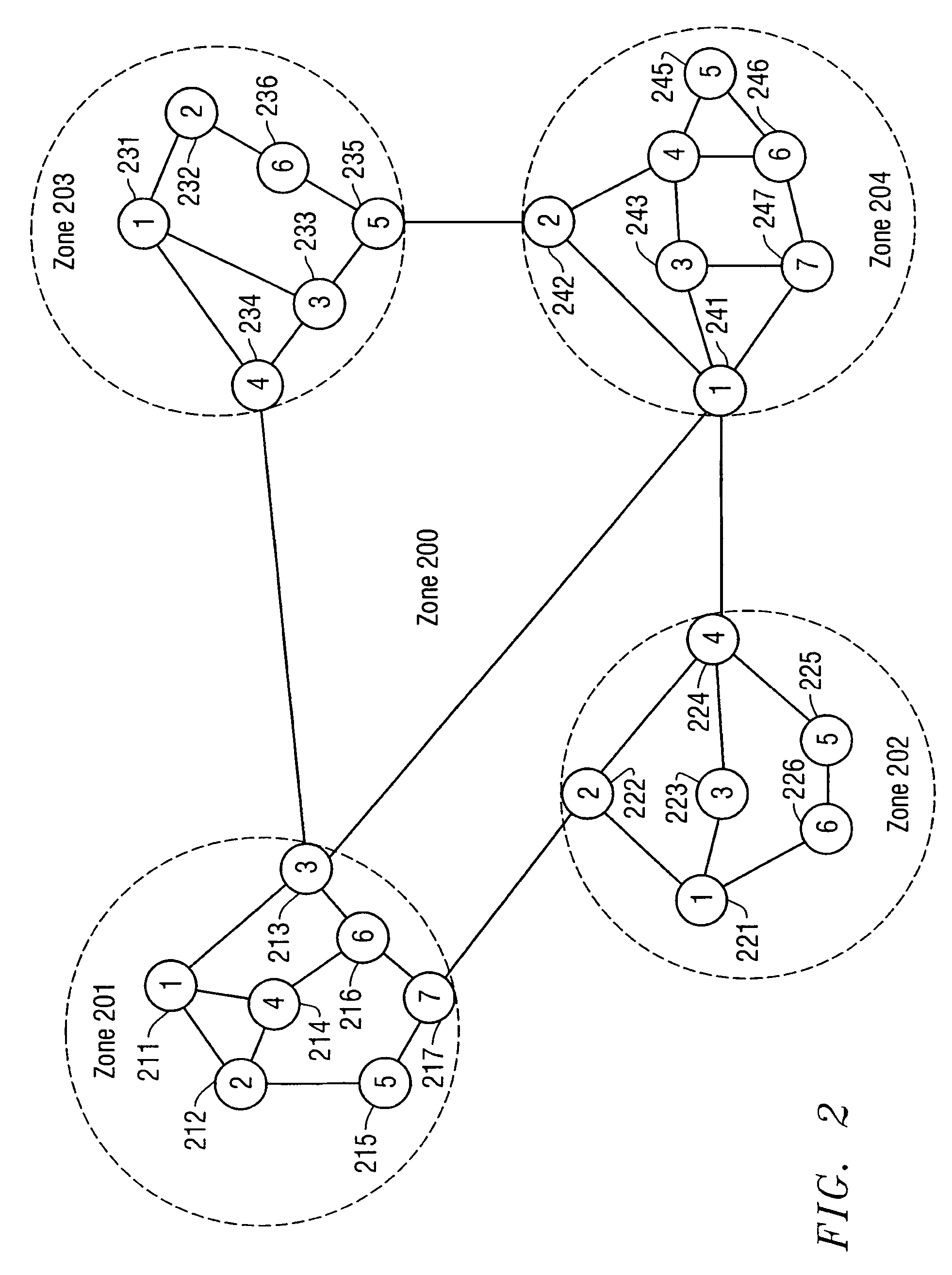Network addressing scheme for reducing protocol overhead in an optical network
a network address and optical network technology, applied in the field of information networks, can solve the problem of large amount of time consumed, and achieve the effect of reducing time and resources
- Summary
- Abstract
- Description
- Claims
- Application Information
AI Technical Summary
Benefits of technology
Problems solved by technology
Method used
Image
Examples
Embodiment Construction
[0032]The following is intended to provide a detailed description of an example of the invention and should not be taken to be limiting of the invention itself. Rather, any number of variations may fall within the scope of the invention which is defined in the claims following the description.
[0033]In one embodiment, a network architecture is described that provides many advantages, including a reduction in protocol overhead experienced by the network, quicker provisioning and restoration of circuits, support for highly efficient protocols, and other advantages. These and other advantages are particularly important when an embodiment of the present invention is used in an optical telecommunications network (e.g., a network employing the Synchronous Optical Network (SONET) protocol, such as that described herein), due in part to the enhancement in restoration times and reduction in protocol overhead provided thereby.
[0034]To limit the size of the topology database...
PUM
 Login to View More
Login to View More Abstract
Description
Claims
Application Information
 Login to View More
Login to View More - R&D
- Intellectual Property
- Life Sciences
- Materials
- Tech Scout
- Unparalleled Data Quality
- Higher Quality Content
- 60% Fewer Hallucinations
Browse by: Latest US Patents, China's latest patents, Technical Efficacy Thesaurus, Application Domain, Technology Topic, Popular Technical Reports.
© 2025 PatSnap. All rights reserved.Legal|Privacy policy|Modern Slavery Act Transparency Statement|Sitemap|About US| Contact US: help@patsnap.com



